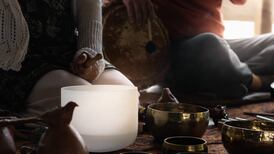New York’s mayor James “Jimmy” Walker resigned in September 1932. The story of this colourful Irish-American civic leader has since been told in book and film form, as well as on the stage. The mayor was facing corruption charges when he resigned.
Walker’s father, William, came from Castlecomer, Co Kilkenny, and emigrated to the US in 1870. He became a carpenter and entered local New York politics in 1887.
His son Jimmy was born in 1881 and followed his father into local politics, becoming linked with the infamous Tammany Hall organisation.
During his political career, Jimmy Walker amassed several nicknames that were inspired by some of his most well-known traits. “Beau James” is how he was referred to due to his impeccably dapper appearance.
Setting the Bar High – Frank McNally on pubs called The Irish Times (and more songs about newspapers)
The Times they are a-name-checking – Frank McNally on songs about newspapers
Lexicographer at Large – Frank McNally on Dinneen’s Dictionary and the Dáil row about unparliamentary Irish
For Whom the Bells Toll – Frank McNally on the ups and downs of “sound baths”
As he was never on time for meetings or functions (including his own inauguration), he earned the nickname of “The Late Mayor”. When he partied into the night in the city that never sleeps and missed mornings in City Hall, he was awarded the sobriquet of “The Night Mayor”.
His start in politics came when he entered the New York State Assembly in 1910. He trained as a lawyer and entered the New York Senate in 1915. While there, he introduced a bill to legalise boxing in the State.
He remained in the Senate until 1926 when he won the mayoral election.
Prohibition was still in place in the 1920s and he was known to frequent speakeasies near to where he lived in Greenwich Village.
He was also an avid theatre-goer and liked to attend Broadway theatres.
During his two terms in office, he promoted a raft of popular legislation to appeal to the masses. He lifted the ban on ball games on Sundays and created the Department of Sanitation. He also made improvements in the playgrounds and park systems, instigated the unification of the city’s public hospitals and pushed for an expansion of the subway system.
In the early years of his first term, he visited Ireland for a weekend and enjoyed a packed agenda.
In August 1927, thousands turned out along the harbour front in Dun Laoghaire to welcome him when he arrived on the mail boat from Holyhead.
Come Back to Erin was played by a band on the pier as he was welcomed onboard by a deputation from the Dublin City Commissioners. As he stepped on to Irish soil, the band played Amhrán na bhFiann and the Star Spangled Banner.
He was received by the American Minister (Ambassador) at his official residence in the Phoenix Park and later attended a ball in the Gresham Hotel. The following day, he visited WT Cosgrave at Government Buildings and paid a courtesy visit to the Governor General in the Phoenix Park.
Outside of Dublin, Walker was invited to John McCormack’s home, Moore Abbey, in Monasterevin. He also made a number of stops in Kilkenny – to receive the freedom of the city and to see his father’s birthplace.
His car was led into Castlecomer by a band and he made a speech to an assembled crowd of locals.
After visiting Ireland, he made his way to other European countries and always wanting to look his sartorial best, it was reported in the press that he travelled with a collection of over 40 suits.
The trip was not without incident. One American newspaper claimed that Walker “caused a sensation” in Rome, as he visited the Pope before meeting Mussolini and his government officials. Walker stated that he called to see the Pope because “I am a Catholic” and that he had to fulfil his religious duty before anything else.
Walker was re-elected in 1929 but rumours of corruption started to circulate. A committee was established in 1931 to look into corruption in New York City as the state governor, Franklin D Roosevelt, wanted to get to the bottom of the rumours.
Walker was unable to account for certain deposits in his bank account and amid charges of “graft”, he was forced to resign from office in September 1932, the first New York mayor in history to do so. Walker went on a three-year tour of Europe with his showgirl-mistress, spending much of the time in England.
He paid another visit to Ireland in the summer of 1935. It was a much more relaxed affair this time. He and his now wife drove from Cork to Castlecomer and passed through Clonmel, Co Tipperary, on the way.
When he died at age 65 in 1946, Time magazine remembered him as a “dapper, silk-hatted symbol of the Fabulous Twenties”.
Reproached for having filled city offices with “sluggish Tammany favorites”, Time magazine argued that “jazz-happy New York” loved his flamboyant style.
Walker’s life inspired books and two Hollywood movies. The Night Mayor was released in 1932, and Beau James, staring Bob Hope and Vera Mills, was released in 1957.















